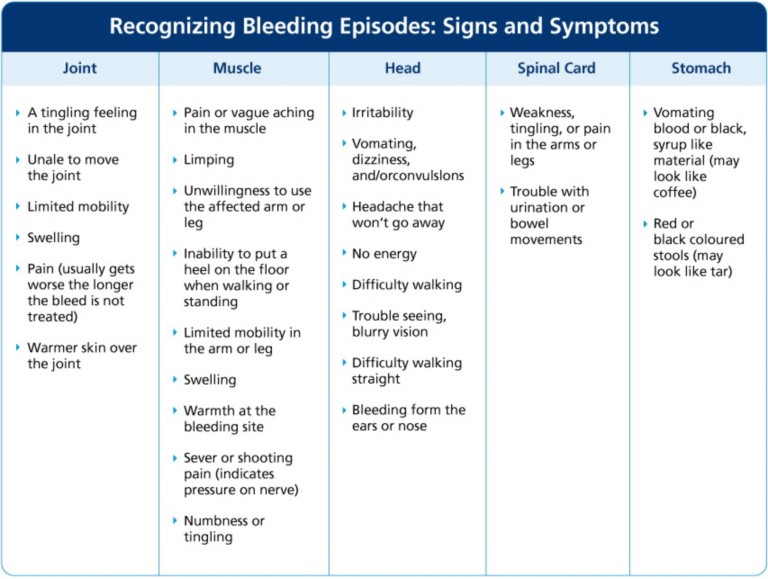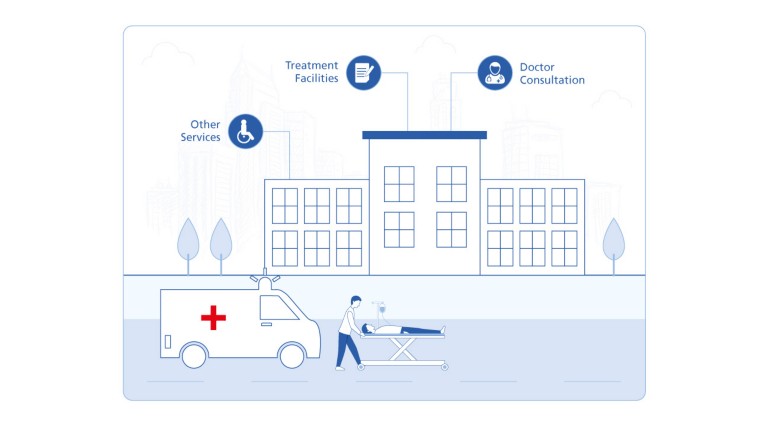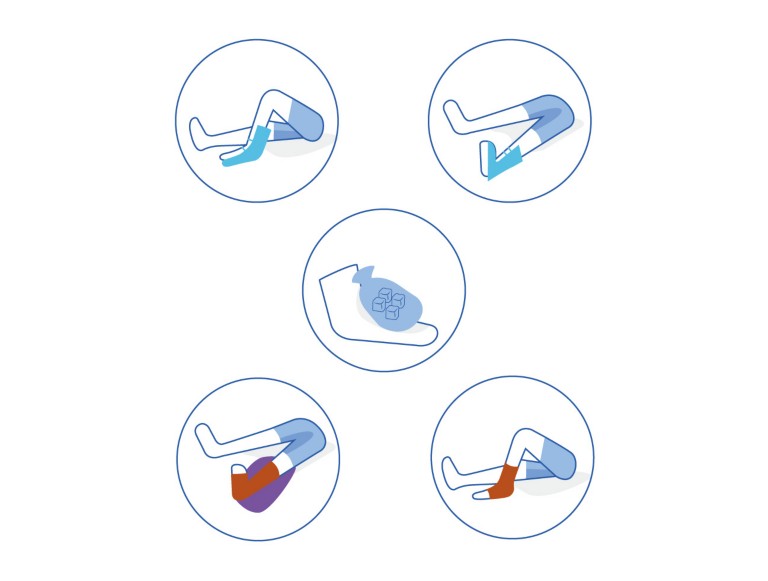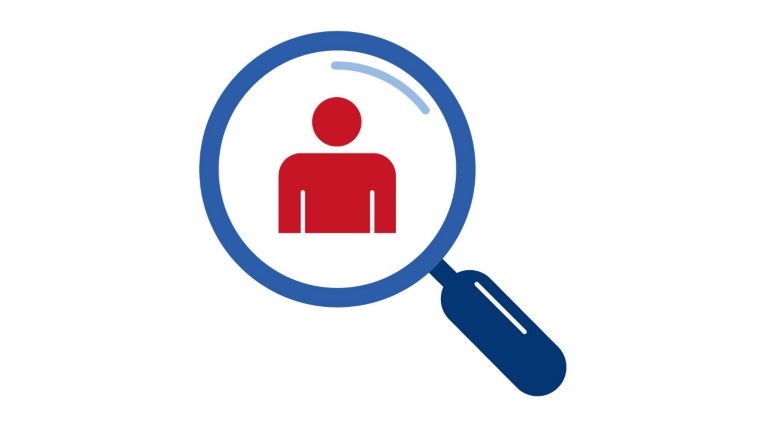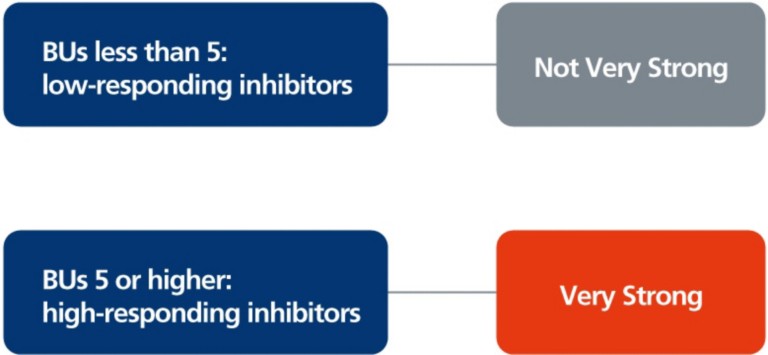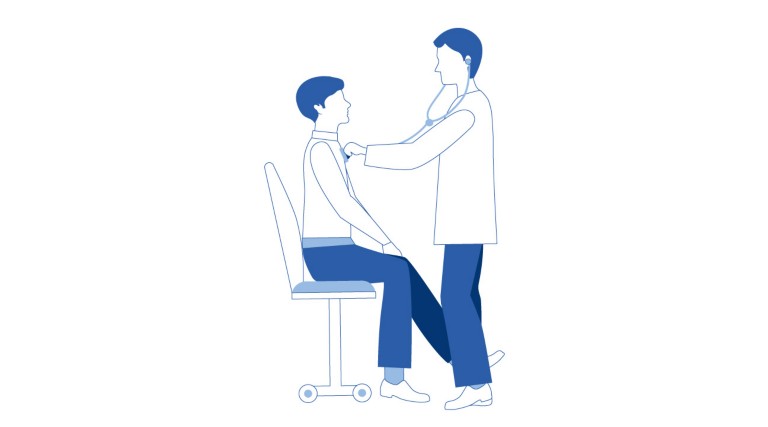Before you can treat a bleed, you must be able to know when a bleed is happening. Bleeding can occur inside or outside the body. Children may be too young to say how they feel. Look out for signs of a bleed. Some of these include:
When treatment is late, the bleed takes longer to heal, and more treatment product is needed.
Bleeds should be treated quickly to recover more quickly and prevent later damage. If in doubt, treat. Don’t wait!
Apply first aid as soon as possible to limit the amount of bleeding and damage. Do this even if factor replacement will be given.
Do P.R.I.C.E.
Protection: Protect the bleeding appendage from undue stress perhaps by using a splint, sling or crutches.
Rest: The arm or leg should rest on pillows or the person should not move the bleeding joint or walk on it.
Ice: Wrap an ice pack in a damp towel and put it over the bleed. After 5 minutes, remove the ice for at least 10 minutes. Keep alternating: 5 minutes on, 10 minutes off, for as long as the joint feels hot. This may help decrease pain and limit bleeding.
Compression: Joints can be wrapped in a tensor bandage or elastic stocking. This gentle pressure may help to limit bleeding and support the joint. Use compression carefully with muscle bleeds if a nerve injury is suspected.
Elevation: Raise the area that is bleeding above the level of the heart. This may slow blood loss by lowering pressure in the area.
Haemophilia can usually be treated by injecting the missing clotting factor into a vein. Clotting factor cannot be given by mouth.
Clotting factors can be given by two methods:
On-demand therapy: Whenever the person suffers a bleed, clotting factors are to be given according to the type and severity of the bleed.
Prophylaxis therapy: Prophylaxis is giving clotting factors to PWH to prevent anticipated bleeding. The clotting factors are usually given either on alternative days or thrice weekly or in some cases twice weekly.
Prophylaxis prevents altogether the occurrence or delays progression of the joint disease; hence reducing the disability associated with Haemophilia.
Sometimes factor stops working. This is because the body makes antibodies to the factor. Antibodies stop, or inhibit, the factor from working. The immune system allows the body to defend itself. It fights bacteria and viruses. When some people get factor replacement therapy, their immune systems see it as foreign-like bacteria and attack it. This stops the factor from working. These kinds of antibodies are called inhibitors.
Your chance of getting an inhibitor depends on a few things:
- Severity of haemophilia
- Type of haemophilia
- Family History
- Race
- Genotype
- High-dose factor replacement therapy in a short period of time
People with severe haemophilia are more likely to get inhibitors than those with mild haemophilia. Haemophilia with inhibitors is also more common in people with haemophilia A.
Having a family history of inhibitors means you are more likely to get them. People of African or Hispanic descent are also at a greater risk.
Most patients who develop inhibitors do so within the period of the first 75 exposures to factor concentrates with the greatest risk occurring between the first 10-2- treatments
A blood test called the Bethesda inhibitor assay is used to detect inhibitors. The test uses Bethesda units (BUs) to measure the amount of inhibitors. This is called a Bethesda titre. Stronger inhibitors result in higher titres (high BUs). You always want titres to be low.
There are 2 types of inhibitors: They are defined by how strong the inhibitor is. If factor is injected and the response is:
As titre rises, the factor is even less effective to clot the blood. The antibodies inhibit the factor from working.
Higher the titre, more the factor required to stop the bleed
Inhibitors make it hard to stop a bleed. They inhibit replacement factor from working. People with high-responding inhibitors have to use bypassing agents instead of replacement factor. Bypassing agents allow clotting to take place without Factor VIII or IX. They work to bypass the steps where Factor VIII or IX are needed. This allows blood to clot.
Each person having haemophilia with inhibitors is unique. That means their treatment plan should be, too. Your HTC will make your treatment plan fit your needs.
There are different types of bypassing agents: These include plasma-derived (made from human blood) and recombinant (not made from human blood).
Your HTC will work with you to decide what is best. HTCs are experts. They know your medical needs, together you will find the best option to stop your bleeds fast.
